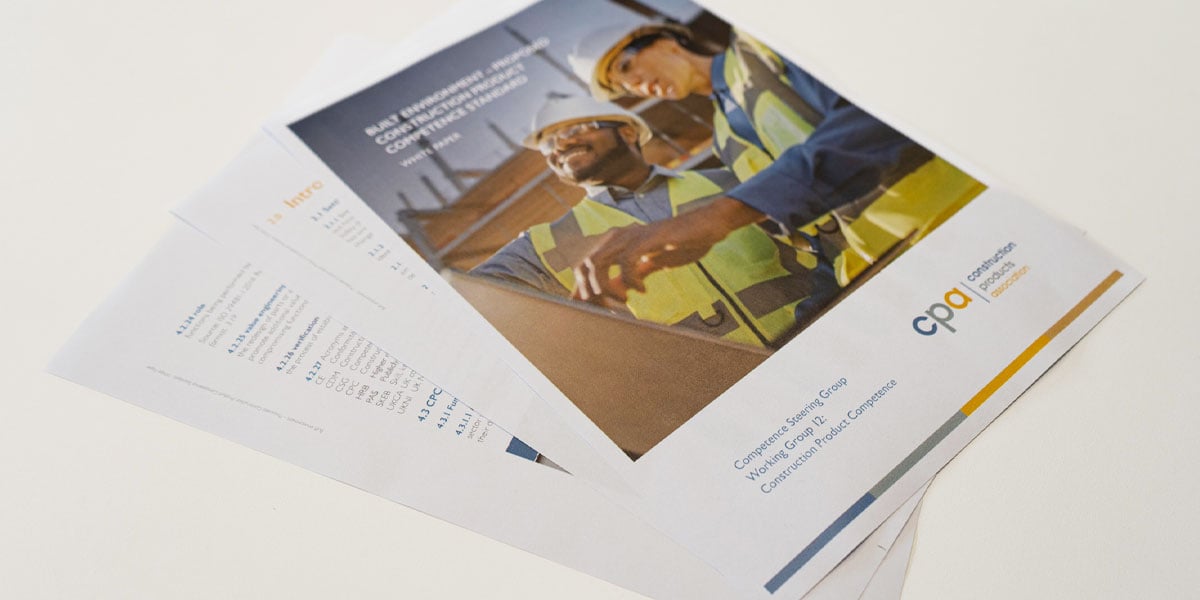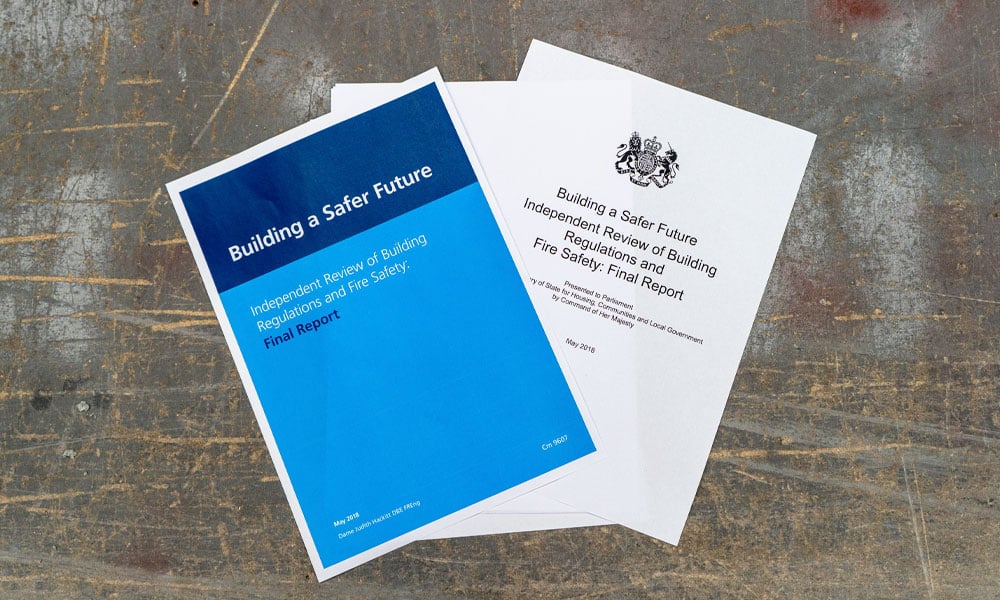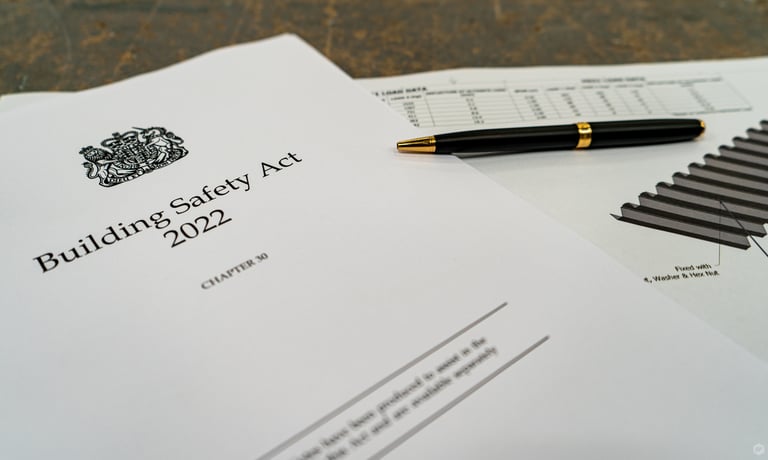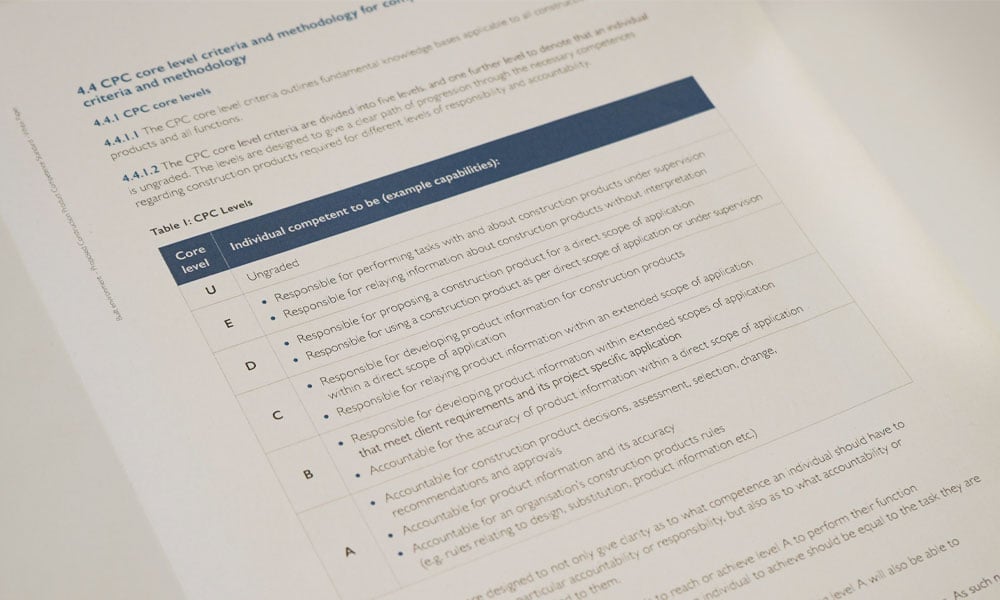Changes are happening in our sector. There's no denying that.
The Construction Products Association (CPA) has very recently released a whitepaper titled the ‘Built Environment – Proposed Construction Product Competence Standard’.
It’s been 4 years in the making, and let’s just say there’s a lot to look forward to!
This proposed standard could really change the scope of how the construction sector operates from now on if it becomes an official standard.
And whether we like it or not, this is something that must be done, as there are many traditional and impractical long-standing practices in our industry.
If this is news to you and/or you’d like to hear more about this white paper, keep reading. We’ll go through:
What is the Built Environment - Proposed Construction Product Competence Standard
How did it come around?
What is the working group 12?
What's wrong with how competence is currently 'evidenced'?
How would the proposal impact M&E stakeholders?
What are the proposed solutions?
What is the proposed CPC core-level criteria?
What can M&E contractors do to prepare for the coming change?
Conclusion
We'd also suggest giving the below podcast a listen and/or watch. We had the pleasure of being joined by Hanna Clarke, the Digital & Policy Manager at the Construction Products Association and Lead Author of the Proposed CPC Standard, for our first podcast episode to share her expertise.
What is the Built Environment – Proposed Construction Product Competence Standard?
It’s a white paper that was recently developed to outline proposals for an industry-agreed standard on Construction Product Competence (CPC). It’s also intended to give the built environment sector a chance to consider these proposals and prepare and adapt accordingly.

How did it come around?
As you probably know, the Grenfell Tower fire was a true wake-up call for the construction and built environment industry that propelled most sectors within it to take a long, hard look at itself and its practice. That is, not just in relation to the immediate issue, fire safety, but across all concerns.
As a result, shortcomings were scrutinized and potential corrections were put forward. The principal example of this is the Hackitt report i.e. the Independent Review of Building Regulations and Fire Safety.
After Dame Judith Hackitt emphasised that she believes competence is the keystone of the much-needed collective change & improvement in her report, the Government began (and continues to) implement regulatory changes and it’s been accepted as what we should be working towards.
The Industry Response Group was born off the back of this, who then set up the Competence for Building a Safer Future, AKA the Competence Steering Group (CSG).
What is Working group 12?
Almost immediately after the report was issued, the CSG was formed and identified 11 working groups to develop competence frameworks, and a 12th working group (WG12) was formed and tasked with CPC – i.e. coming up with a solution that assures everyone using construction products is competent to do so (and can demonstrate that). Thus, this white paper was born!
The first 11 working groups were initially formed with the question of “who needs to be competent” in mind” (for example, WG2 is about installer competence) as competence was highlighted as a prevalent issue. Then, the 12th WG was formed when it was realised that in all groups, the use of construction products cuts across everybody
What's wrong with how competence is currently 'evidenced'?
As of now, there isn’t a unified & universally agreed-upon method of demonstrating an individual’s competence who is responsible for completing tasks concerning construction products. This is a major issue because using construction products incorrectly can result in seriously dangerous outcomes, and this, unfortunately, does happen; which is precisely what’s wrong with the current approach.
If those using the products, and therefore accountable for them, are trained to be competent (to their required level) and have proof of that, it could ensure (or at least make it considerably more likely) that buildings are safe, efficient, and fit for their purpose. They should also be able to understand the products and their limitations. This is exactly why the WG12 was assigned to produce a solution that instigates this.
As mentioned, the Hackitt report clearly identifies measuring competence as a key ‘bone of contention’. In reference to the built environment, Hackitt said…
“An existing approach to competence which is fragmented, encompassing a range of disciplines and different competence frameworks even within one discipline and without reference to other interacting disciplines. This results in people working within the system focusing on their individual specialism without giving due consideration to how their work may interact with the work of others and failure to see a building as a single entity or system.”
Dame Judith Hackitt, 2018
It’s also a common mistake to assume that a certain product suitable for a specific application would also be suitable for a different, but similar application e.g. supporting the same services but externally rather than internally, and this is not true. The environment makes a big difference. To be able to determine whether a product is truly suitable and correctly specify, you must be adequately competent.
On top of this, you should take into account the combination of all products and how they react to each other; but this is easier said than done. The industry is used to treating products in a siloed fashion i.e. only considering individual products, and this is wrong.

However, considering each product has different characteristics, it’s quite difficult to take everything into consideration as it adds up to many factors to think about. The proposal gives some examples which paint a clearer picture, though.
“In many cases, the M&E contract will be the biggest sub-contract award on a project. The M&E Contractor will typically award several sub-contract awards to installation specialists – thermal insulation is just one of these. How will the individual awarding thermal insulation packages evidence their own construction product competence (CPC) and effectively display that they are awarding a contract based on specification compliance rather than the cheapest price alone? For CPC to work, we really need to acknowledge the crossover areas and work together to achieve the right outcomes!”

Chris Ridge, Technical Policy Manager at TICA and WG12 member
How would the proposal impact M&E stakeholders?
There are many occupations which utilize construction products – be it manufacturing, selling, procuring, designing with, specifying, maintaining, installing, verifying, supervising, or other. For all of them, a certain level of competence is required, varying and depending on the tasks they have to complete in their specific profession within the supply chain., and must be proven.
Really, there isn’t a single job within the built environment sector that doesn’t require interaction with construction products in one way or another… that probably includes your job. Yes, you reading this! You must also be able to demonstrate your competence.
The white paper is not a British standard as of yet (it takes time) but that is the stage it is heading through natural progression.
What are the proposed solutions?
You see, the difficulty with ‘competence’ is that it’s hard to define. But this white paper resolves that by suggesting a number of steps that can be taken by the industry and organisations to implement the CPC framework. It identifies:
- The need for a harmonized standard in the industry that defines competence (hence the proposal)
- Who is responsible for being trained and competent
- How an individual can be competent and what it looks like depending on their function
- A clearly labelled framework; a ‘CPC’ table that describes 5 levels of core criteria and provides real examples/applications for capabilities Level U – Level E in simple bullet points (see next subheading)
- The steps that should be taken to implement this standard and for all individuals to prove their competence
What the Building Safety Act (BSA) sets out is bolted into the framework and you might find similarities.

What is the proposed CPC core-level criteria?
This is a framework that is intended to ‘measure’ competence and to be used by people of all areas in the construction sector as an indication of their own existing levels of competence and qualifications. They can either use it to prove that they are competent enough or to recognize any gaps in their training and what they need to do in order to achieve the necessary level of competence.
In short, it defines the level of competence you should be at based on your responsibilities (what responsibilities are expected at each core level, and what’s not expected) in relation to construction products. It clearly pinpoints fundamental areas of knowledge that are applicable to all construction products and functions (job roles/activities) and how much you should know at each level.
The criteria consist of 5 levels, plus an ‘ungraded’ one. As you go up them, the responsibilities and knowledge levels become more advanced, showing a path of progression. Each level consists of criteria that are organised by activity (i.e. if your activity/task is x, you should be knowledgeable in and capable of y.)

It should be noted that it won’t be mandatory for all individuals to achieve level A to be considered competent for their role; the required level of competence would be aligned with the position and its tasks. But, someone who’s achieved level A would also be competent for all the tasks/responsibilities outlined in levels B, C, D, and E (it is cumulative).
It’s also not as black & white as it seems. As there are many functions in M&E and construction, not all criteria will be relevant to all of them, and some from other levels may be applicable to the specific job at hand. The point is that the overall level will be determined based on where the majority of key criteria are drawn from.
The framework is made to be adaptable to different jobs/roles and somewhat open to interpretation – it doesn’t clearly say how to evidence your competence; that will be down to common sense and your functions. It’s up to you to look at the framework, and based on the functions, assign a level of competence required of those fulfilling them, so that they can demonstrate the necessary knowledge and experience – everyone has to have some knowledge, to varying degrees. The key point to remember is: doing nothing is not an option anymore!
The BSA, combined with this white paper when it becomes a British standard, will mean that if something goes wrong in your installation and you get dragged into court, non-compliance will stand against you and you could get penalised with a fine, a jail sentence, or both.
What can M&E contractors do to prepare for the coming change?
Well, it shouldn’t come as a surprise that we strongly recommend familiarising yourself with the recent white paper on the CPC proposed standard. In particular, focus on the CPC core level criteria on page 16, as well as Appendix 1 on page 39; these two succinctly summarise everything that is expected in terms of competence.
Moreover, the CPA has been and will be running webinars that focus on various parts of the supply chain, specific to the various stakeholders and functions. There has been one so far focused on Manufacturers. It’s also advised to watch them or attend the upcoming webinars (whichever is relevant to your stakeholder responsibility) to get a better feel for the standard and how to interpret & apply it to your work:
- Designers
- Contractors
- Operations & Maintenance
- Merchants/Distributors
Keep an eye out on the CPA website and LinkedIn page for when the dates will be announced.
Apart from that, you should look at how you’re going to go about this internally; consider how you can apply the framework to your own organisation, and whether you can do it yourself or if you need industry support. If you need guidance, and to get the most relevant demonstration of competence for your sector, you can refer to associations within your area of specialism. This was encouraged by the CPA, too.
“The CPC framework is something that can be adopted at industry level or organisational level. For example, the Thermal Insulation industry is predominantly made up of specialist SME businesses and at TICA we feel that we have an obligation to assist our members by adopting the CPC framework to our specific industry. We would encourage contractors of all sizes to download and read the white paper and to engage with the trade associations relevant to their market about the support they may be able to offer.”

Chris Ridge, Technical Policy Manager at TICA and WG12 member
The associations can help you identify how to make the framework applicable to your niche – for example, for M&E, it’s most likely to be BESA (Building Engineering Services Association) and BEMA (British Engineering Manufacturer’s Association). For thermal insulation, it would be TICA (Thermal Insulation Contractors Association), and so on. They should be able to provide the most credible guidance on it and if they aren’t already, we should be asking them! It will very much be a collaborative effort for the greater good.
Conclusion
At the end of the day, the changes are driven by regulations and there will be those that adopt the principles early on, and those that won’t until regulation takes place.
It’s up to you whether you want to keep ahead or not. But the truth is, if you do, you’d only be making the built environment (and the world!) safer for you and everyone else; if not now, then at some point!
This is only one piece of work of many that all interconnect and are bound to be addressed. The BSA is already here, which is the biggest piece of legislation to hit the market in 50 years. All of this combined means more regulatory changes and secondary legislation is imminent.
The CPC Framework is not here to hinder you but rather benefit and assist you in achieving competence and compliance; because the reality is that secondary legislation is on the way regardless, and this tool will protect you and others from any negative consequences.


